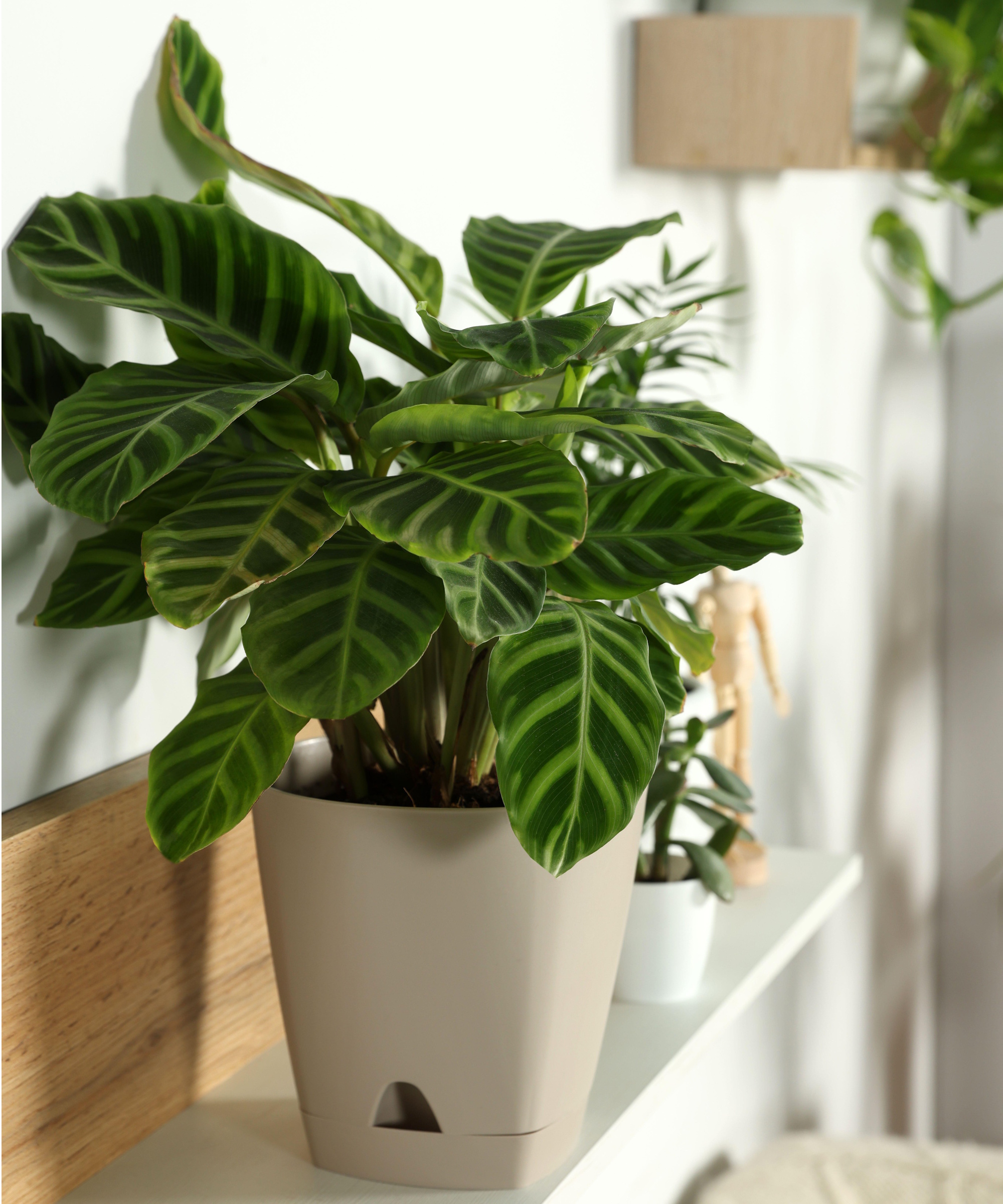
If there was just one type of houseplant I could collect, it would be calatheas. There are around 60 calathea varieties, with no two looking exactly the same. Each type of calathea has a unique variegated pattern and range of colors, so it's the perfect plant to personalize to interior aesthetics and preferences in the home.
It's no secret that calathea care can be difficult. These plants are notorious for being tricky, and it's not uncommon to watch a calathea droop if they have incorrect water levels, insufficient light, or if they're growing in chilly temperatures. That being said, knowing just a few simple care hacks can allow you to enjoy the striking foliage of calathea varieties stress-free.

But, where do you start with choosing the right one for you? Here, a houseplant expert highlights five calathea varieties she says will suit any home. Plus, we take a look at some essential care that will keep each one happy.5 beautiful calathea varieties 'Calatheas are now in the genus Goeppertia, but most people still call them calatheas,' explains Lisa Eldred Steinkopf, plant expert at The Houseplant Guru.
If you aren't already fascinated by the interesting appearance of these plants, then you'll be hooked once you learn more about their common name of 'prayer plant.' This derives from how their foliage opens in the day and closes at night, mimicking the movement of praying hands, making them even more interesting to observe.Discover five of the best calathea varieties to start your collection below:1.
Rattlesnake calathea(Image credit: Akchamczuk via Getty Images)The rattlesnake calathea (Calathea lancifolia), now known as Goeppertia insignis, is the first of these plants I added to my houseplant collection. I was instantly taken by its wavy edges and purple underside of its leaves.I've found growing a rattlesnake plant at home fairly straightforward, although I'm the first to admit I did watch my prayer plant leaves curl after letting the soil dry out entirely.
I haven't made this mistake again since using this soil moisture meter from Amazon.'It's best to give this plant an east-window exposure or a west-window back a bit from the window. Keep it moist but not standing in water,' advises Lisa.
Rattlesnake Calathea This calathea is known for its long, wavy green leaves with a brushstroke pattern resembling reptile skin. 2. Calathea orbifolia(Image credit: John Richmond via Alamy)If you're looking for a taller indoor plant in the form of a calathea, choose Calathea orbifolia (Goeppertia orbifolia).
It's one of the larger varieties that can fill spaces in the home easily, to give you an indoor jungle-feel.'This calathea has huge round leaves. Its species name orbifolia is from the Latin word orbis, meaning 'circle' and folium, meaning 'leaf,' Lisa explains.
The span of one leaf can reach as large as a foot. It's ideal for pairing with a Monstera deliciosa if you want to fill your interiors with showy foliage. Just make sure to keep on top of cleaning houseplant leaves as larger foliage like this is often susceptible to becoming dusty.
Calathea Orbifolia This round-leaf calathea has large, attractive leaves and comes in a 6-inch nursery pot. 3. Calathea medallion(Image credit: Botanic World via Alamy)This is one of the more popular prayer plants and it's not hard to see why.
The unique variegated indoor plant foliage of Calathea medallion (or Calathea veitchiana) appears 'painted,' Lisa notes. 'The markings on the leaves are striking,' she says.To maintain this unique pattern, make sure to provide this calathea (and all calatheas) with sufficient lighting.
They do best in bright light, but should be kept away from direct sun - their sensitive foliage could suffer leaf scorch in this position.Likewise, remember to water calatheas so they have a consistent moisture level and don't become dry or oversaturated, both of which can cause browning tips of leaves. Calathea Medallion The beautiful Calathea medallion has oval-shaped with a rich green color and intricate, silver or cream-colored markings.
4. Calathea roseopicta(Image credit: Robbi Akbari Kamaruddin via Alamy)Calathea roseopicta brings together everything there is to love about pink houseplants and houseplants with dark foliage. 'This variety is unique because it has pink striping on the leaves,' Lisa notes.
This rare combination of bright and dark hues is hard to find elsewhere among the best indoor plants, making this calathea a valuable addition to your houseplant collection.Something to note: these plants love higher humidity levels, so might not be the best choice of houseplant for a low humidity room. Try increasing humidity for indoor plants by investing in a humidifier (from Amazon).
Calathea roseopicta The Calathea roseopicta will happily adapt to bright and lower light. It arrives in a 4-inch pot. 5.
Furry feather calathea(Image credit: Creative by Nature via Alamy)There are a couple of reasons furry feather calathea (Goeppertia rufibarba) has earned its name. Firstly, it has a slender feather-shaped foliage with a similar wavy edge to rattlesnake calatheas. Secondly, Lisa notes, 'the backs of its leaves are furry.
''This is my favorite calathea - you can literally pet the leaves. When people first feel the leaves, they are surprised,' she adds.This calathea typically reaches up to three feet in height and two feet in spread, making it another larger option.
It's recommended to mist its leaves regularly (with this plant mister from Amazon), to both increase humidity and help keep its foliage clean where dust and fibres may get trapped in its furry texture. Furry Feather Calathea This is a stunning tropical plant known for its soft green leaves with a unique texture. It arrives in a 4-inch nursery pot.
FAQsAre there any drought-tolerant calathea varieties?No, there aren't any calathea varieties that particularly enjoy growing in dry soil. Calatheas make the list of thirsty houseplants and perform best when provided with a consistent moisture level. For this reason, they aren't the most low-maintenance indoor plants.
Care for each of these calatheas is pretty similar and there are some common calathea mistakes to avoid for all of these varieties. However, be aware that each plant may have slightly differing needs, so it's best to do some research to ensure you can provide optimal care for the one you have chosen. Once you've mastered the skill of looking after these unique plants, try propagating your calathea to grow more of them in your home.
.















